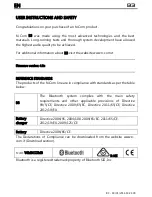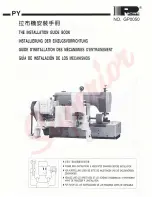
98
Data Files
©
2016-2017 SR Research Ltd.
•
PUPIL <data type>
This specifies the type of pupil size data (AREA or DIAMETER) recorded in the
trial.
•
EVENTS <data type> <eye> <data options>
This specifies what types of data are present in event lines, as a sequence of
keywords. The <data type> is one of "GAZE", "HREF" or "PUPIL". The eye
recorded will be "LEFT", "RIGHT", or both "LEFT" and "RIGHT" for binocular
recordings. The <data option> keywords currently supported are:
"RES" for resolution data (both may be present)
“RATE” for the sample rate (250.00, 500.00, 1000.0, or 2000.0)
“TRACKING” for the tracking mode (P = Pupil, CR = Corneal Reflection)
“FILTER” for the filter level used (0=off, 1=standard, 2=extra)
•
SAMPLES <data type> <eye> <data options>
This specifies what types of data are present in sample lines, as a sequence of
keywords. The <data type> is one of "GAZE", "HREF" or "PUPIL". The eye
recorded will be "LEFT", "RIGHT", or both "LEFT" and "RIGHT" for binocular
recordings. The <data option> keywords currently supported are:
"VEL" for instantaneous velocity data
"RES" for resolution data (both may be present)
“RATE” for the sample rate (250.00, 500.00, 1000.0, or 2000.0)
“TRACKING” for the tracking mode (P = Pupil, CR = Corneal Reflection)
“FILTER” for the filter level used (0=off, 1=standard, 2=extra)
4.10 Processing ASC Files
An ASC file is a simple text file, and thus can be accessed by almost any
programming language. The usual way to process the file is to read each line
into a text buffer (at least 250 characters in size), and to scan the line as a
series of tokens (non-space character groups).
The first token in each line identifies what the line is:
First character in first token
Line type
<no token>
Blank line--skip
# or ; or /
Comment line--skip
*
Preamble line--skip
Digit (0..9)
Sample line
Letter (A..Z)
Event or Specification line
Once the line is identified, it may be processed. Some lines may simply be
skipped, and the next line read immediately. For sample lines, the tokens in the
line can be read and converted into numerical values. The token "." represents a
missing value, and may require special processing. For lines where the first
token begins with a letter, processing depends on what the first token is. The
tokens after the first are read and desired data from the line are extracted from















































